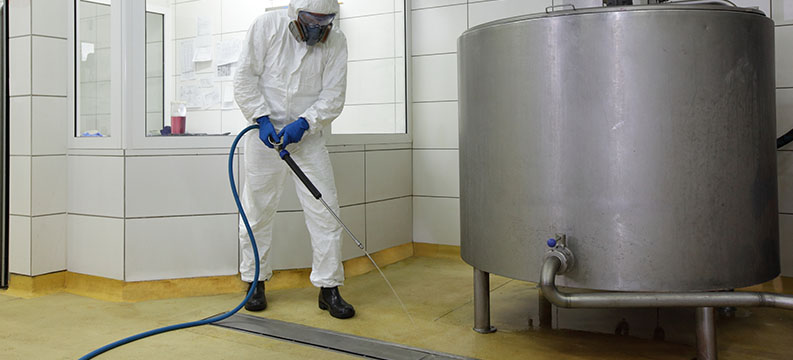The Importance of Proper Drain Sanitation in a Food Processing Plant
Having proper drain sanitation in a food processing plant is a critical environmental program. Drain sanitation is considered Zone 3, and this serious Zone 3 risk can create a myriad of cross-contamination issues in Zones 1 and 2. There are things to consider when trying to minimize cross-contamination risks to Zone 1 and 2.
The biggest risk to Zones 1 and 2 could include cross-contamination to food and beverage products, as both zones are high risk for pathogens. Both Zones 1 and 2 are also low-to-moderate risk for shelf-life spoilage microbes. Since both zones affect food safety in terms of pathogen control and microbial spoilage, an effective Zone 3 drain program can markedly improve a plant and organization’s food safety and quality programs.
The key source of cross-contamination in the highly critical environmental vector of drains is through biofilm formation, as it is with many other environmental and equipment niches. In order to ascertain the most efficacious products for biofilm removal in drains, research studies were completed.
Both sets of studies were presented as Technical Poster Sessions at the International Association for Food Protection meetings. The result was that a chlorinated-alkaline cleaner with an acid sanitizer was the most efficacious.
Biofilm Lab Study
A dynamic flow drain system was developed in a laboratory setting to generate mixed strain L. monocytogenes, S. typhimurium, and E. coli to replicate biofilms on surfaces of the drain, and polyethylene carrier replicates inside the drains. The ability to test a foaming cleaner’s remediation capabilities gives information to the sanitarian by providing a general database for a variety of cleaning technologies which can be used in remediation of a bio-contaminated drain.
Due to the nature of biofilms and the need for either longer contact time or concentration, we challenged these biofilms against various Rochester Midland Corporation (RMC) foaming cleaning products at high-end use concentrations for a five-minute contact time. Control titer samples were compared against exposed carriers to determine overall microbial biofilm reductions of each cleaner.
A total of eight RMC formulations were applied in this laboratory study. The data accumulated showed a significant variance (between 1-5 logs) in log reduction between the formulations used to remediate the bacterial biofilm.
Materials and Methods:
Before experimentation, the entire drain system was cleaned with a mild acid cleaner, rinsed, and autoclaved for twenty minutes. Once the system was sterilized, the entire system was moved to a BSC-II and allowed to cool prior to assembly.
E. coli, S. typhimurium, and L. monocytogenes (ATCC 43888, 7644, and 14028) were cultured individually and then suspended in a 0.1% peptone solution. Each pure culture peptone suspension was combined in a sterilized Butterfield Diluent at the same titer to yield the inoculum for experimentation.
The mixed inoculum was then introduced to the High-Density Polyethylene Carriers (HDPE) and placed into the sterilized drain system. Once the carriers were added, a pump system was activated to feed a 10% solution of TSB of approximately 115 ml of diluted broth every hour, for a total of 96 ± 5 hours.
Once the biofilms reached their maturation state, half of the carrier sets (20 total carriers) were used as control replicates and the other half were exposed to the cleaner formulation for the five-minute contact time. After exposure time, each carrier was added to a test tube of D/E neutralizing broth. Serial dilutions followed and plated onto TSA for quantification. The exposed carriers were then compared against the titer controls to determine log reductions.
If you have concerns with your current drain sanitation program, or are interested in the full drain study, please contact us.

